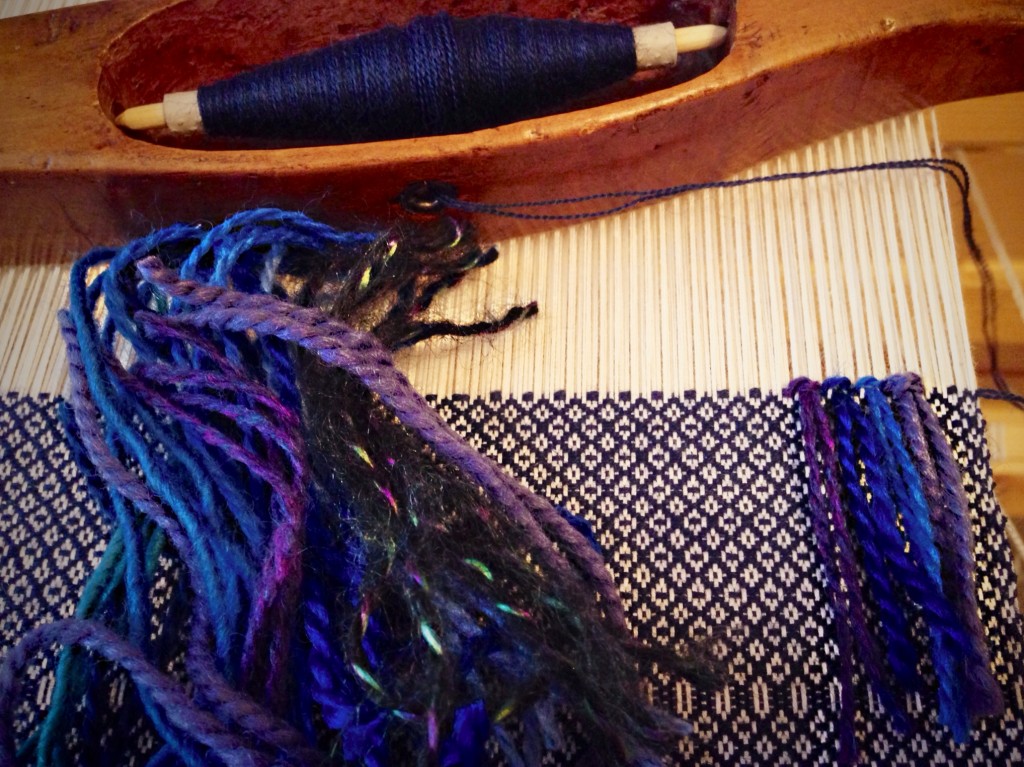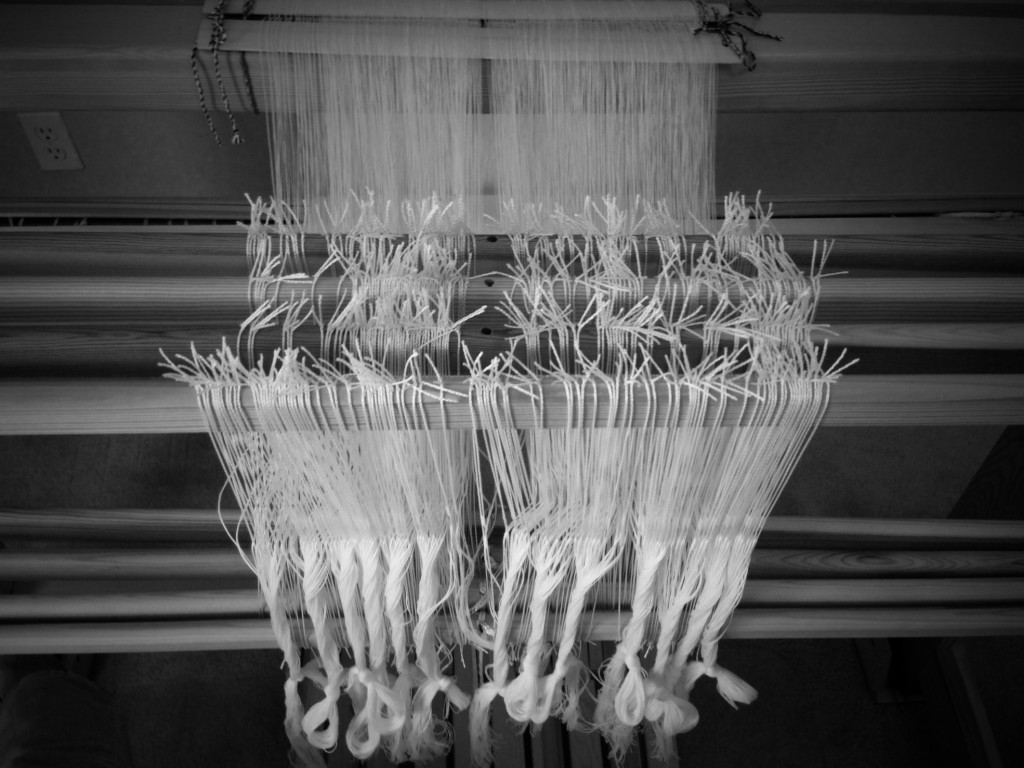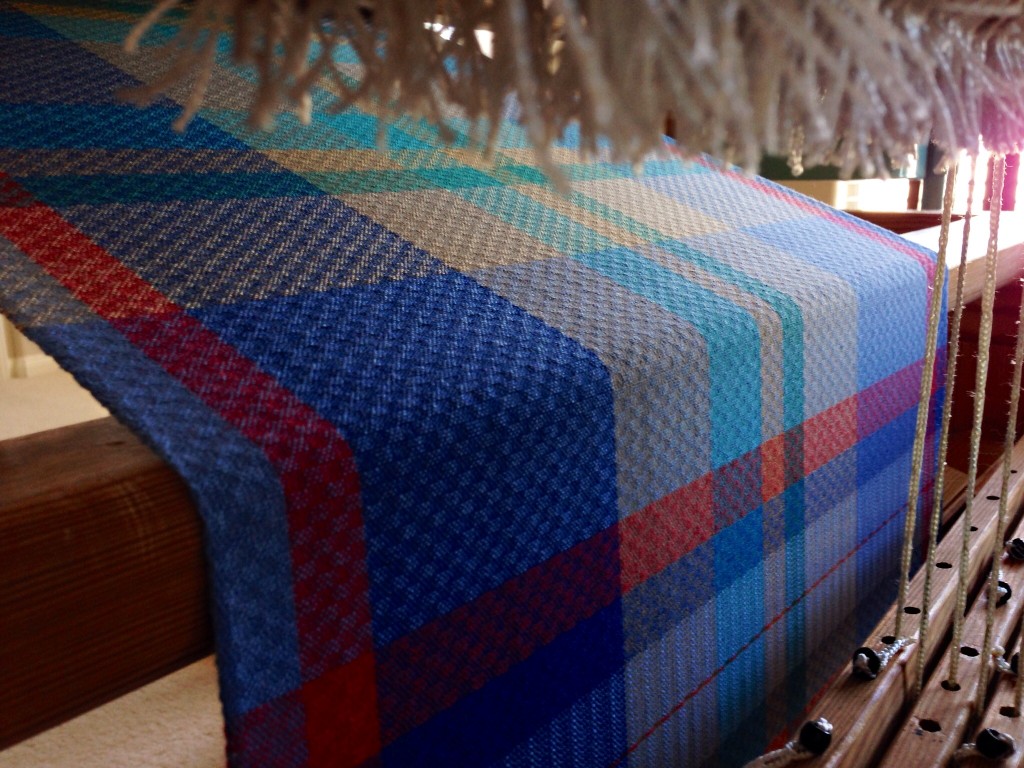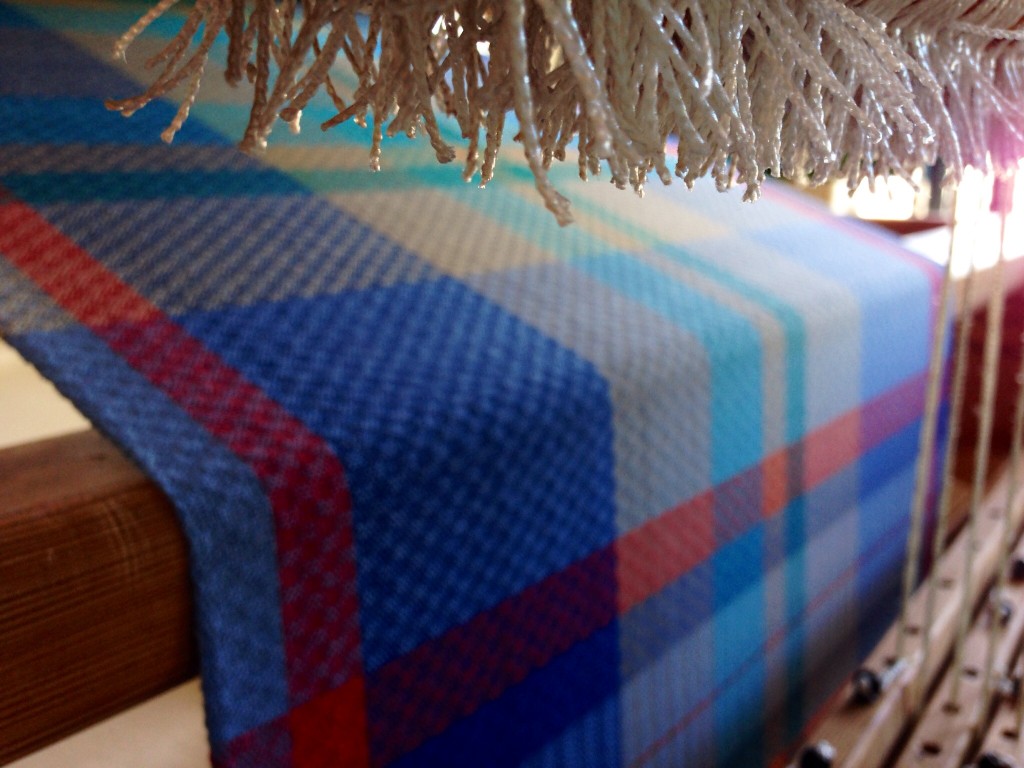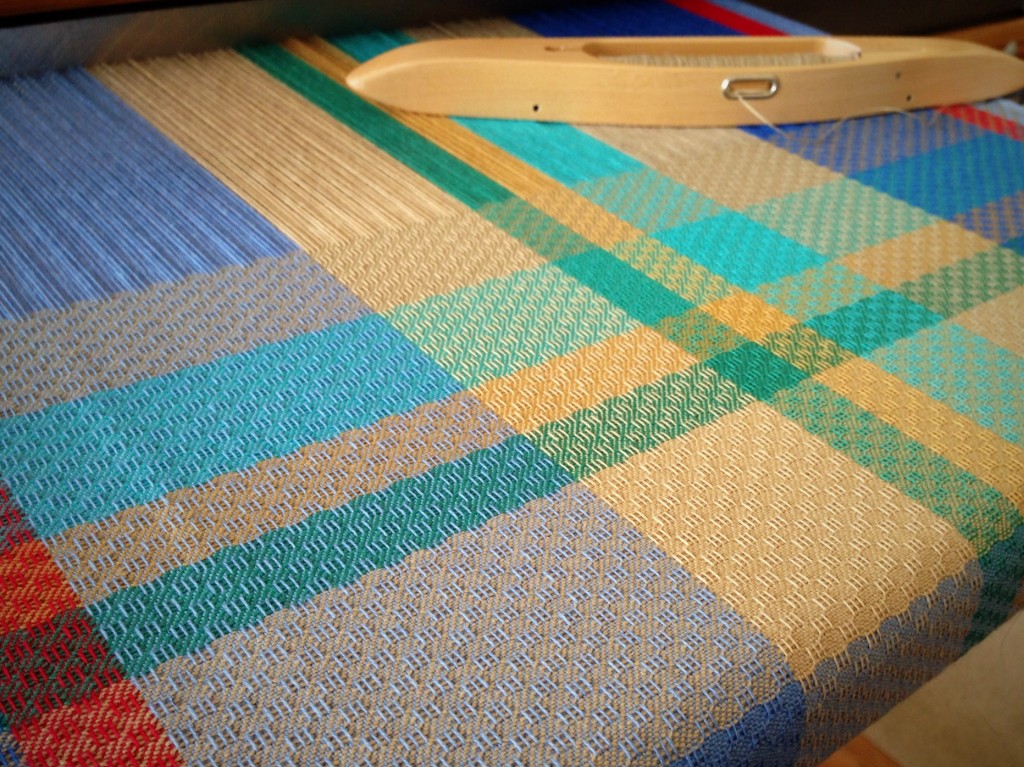When I was a girl I dreamed of being a flying trapeze artist. No fooling! I practiced stunts on our backyard swingset, including hanging from my toes. I grew out of that. My new stunt now, is with a different kind of trapeze. A warping trapeze. (Some people call it a warping valet, but let’s call it a trapeze, okay?)
The warping trapeze is used for beaming the warp. The warp comes over the breast beam, under the foot beam, and then over the cross bar of the trapeze. I use two-pound walking weights and S-hooks to weight the warp bouts, since the warp needs to be under sufficient tension as it is wound onto the warp beam. The warping trapeze makes it easy to single-handedly beam a warp with even tension.
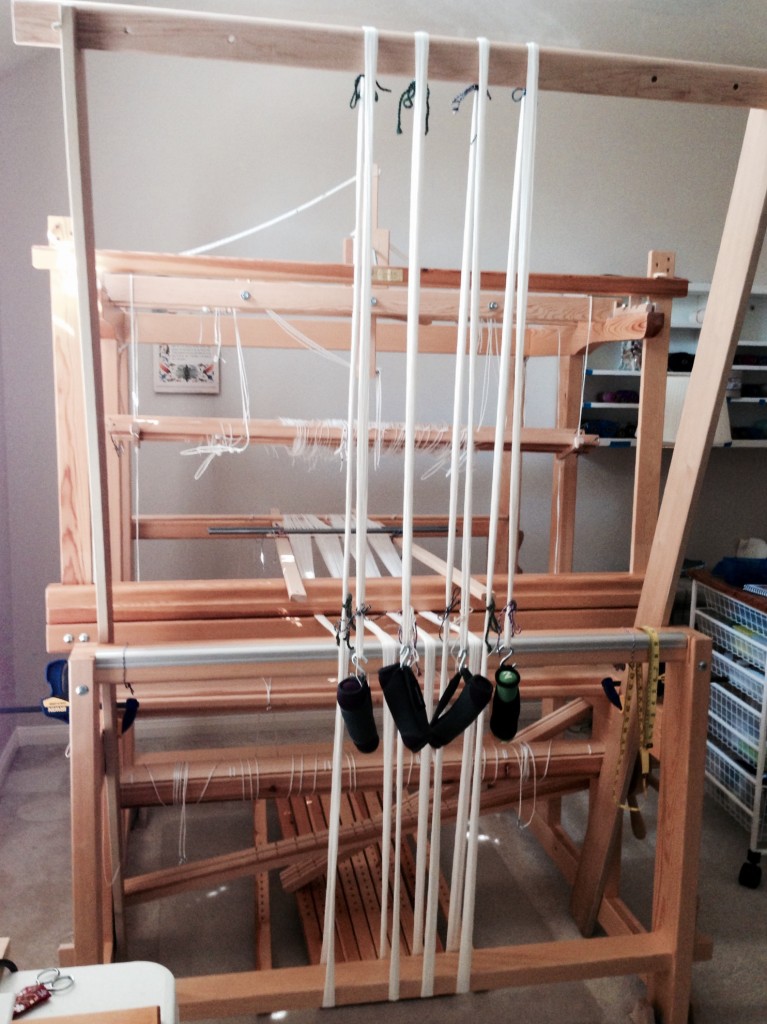
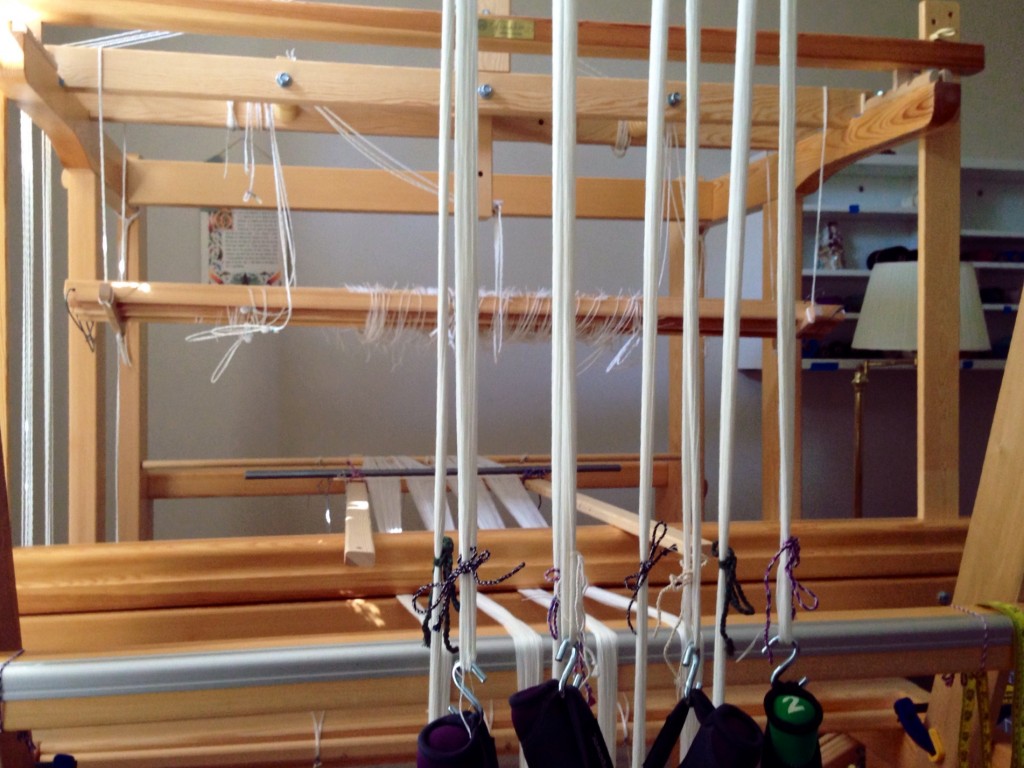
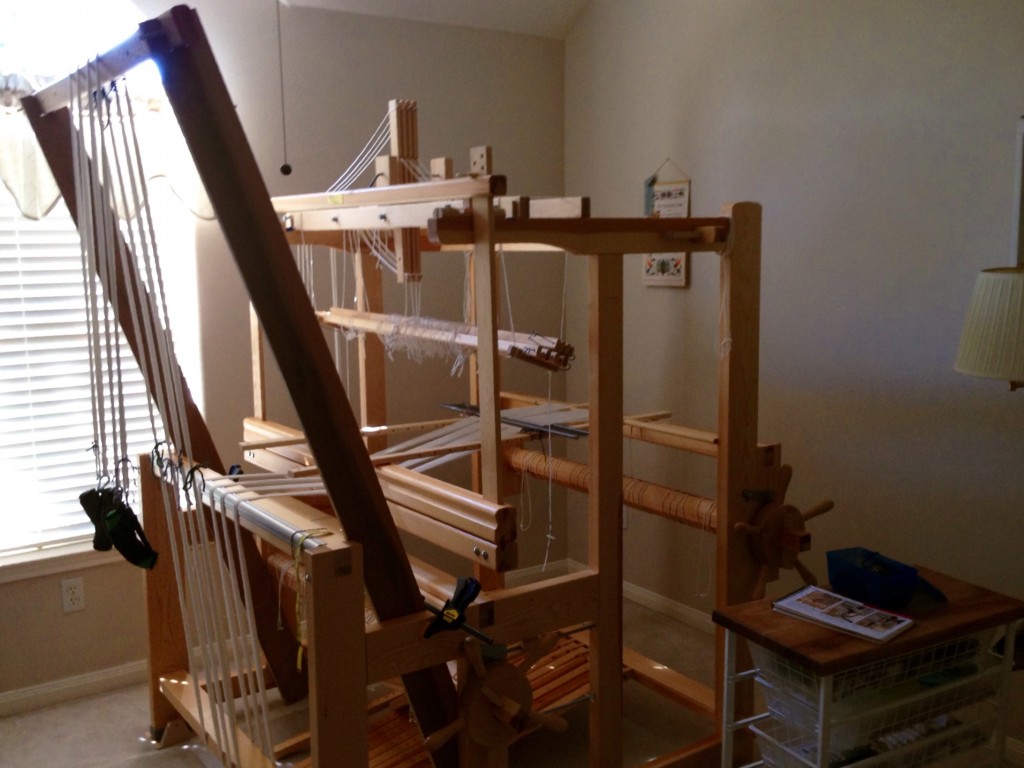
(Did you notice Becky Ashenden’s flippy book, Dress Your Loom the Vävstuga Way: A Bench-Side Photo Guide on my cart? I still like to follow her step-by-step instructions to make sure I’m not missing anything.)
Enjoy this little time-lapse video I created of myself dressing the loom using the warping trapeze. (You will not see me hanging from my toes.)
I fly through the air with the greatest of ease, my threads all in place with the warping trapeze…
Thank you to Becky Ashenden for introducing me to a warping trapeze at Vävstuga Weaving School.
Many thanks to my talented husband for creating my very own warping trapeze. He’s the best!
May you come up with fantastic new stunts.
Happy Weaving,
Karen

